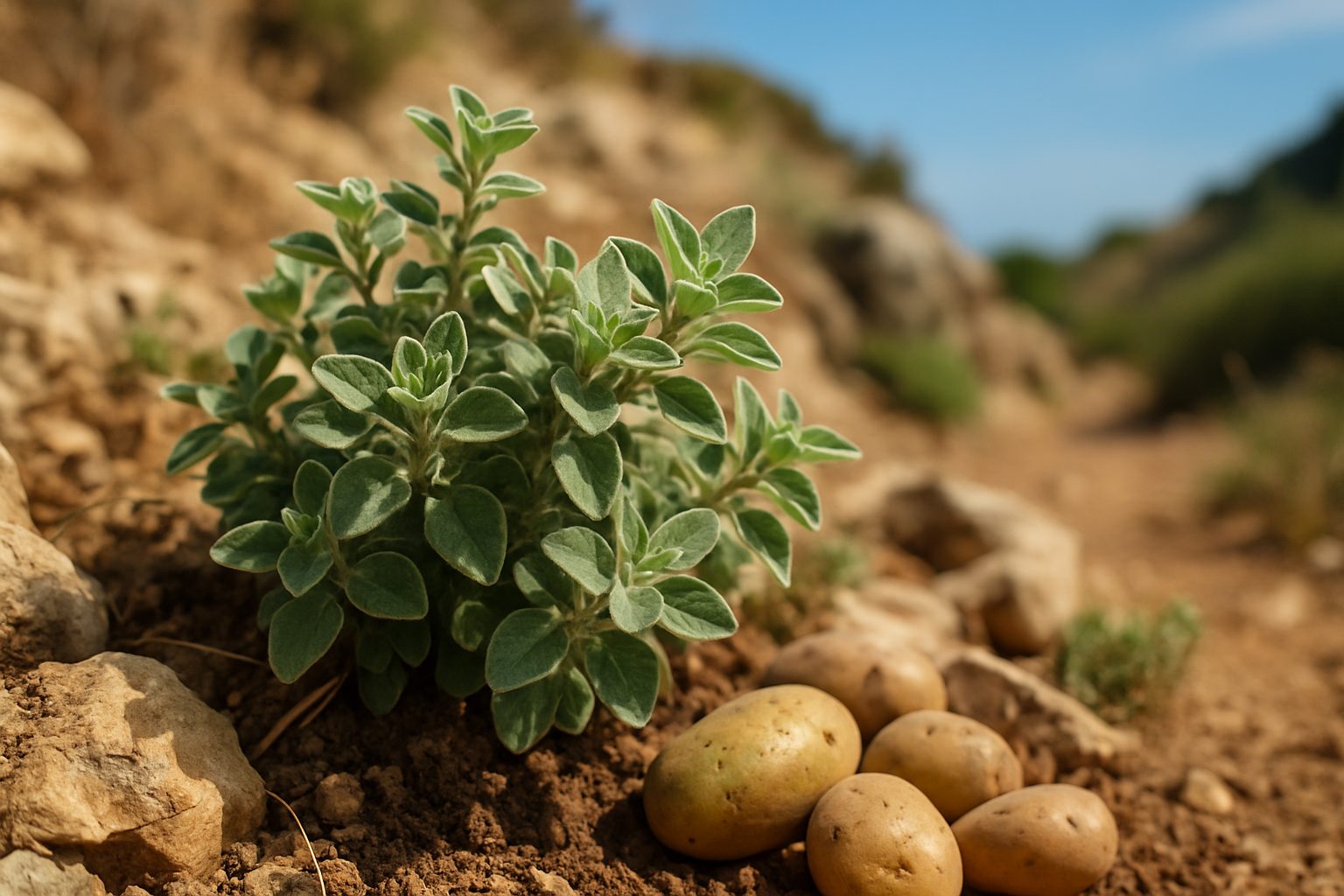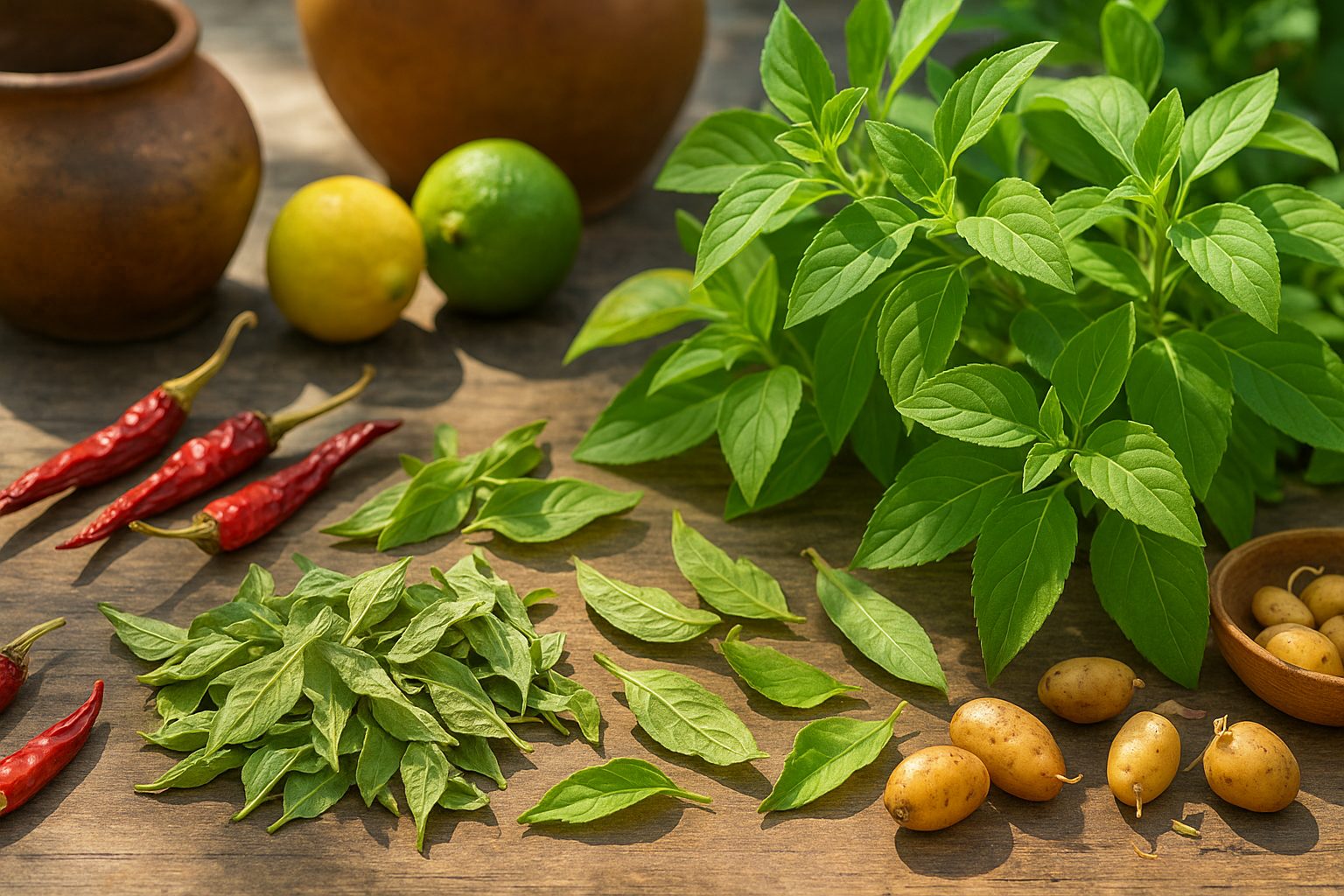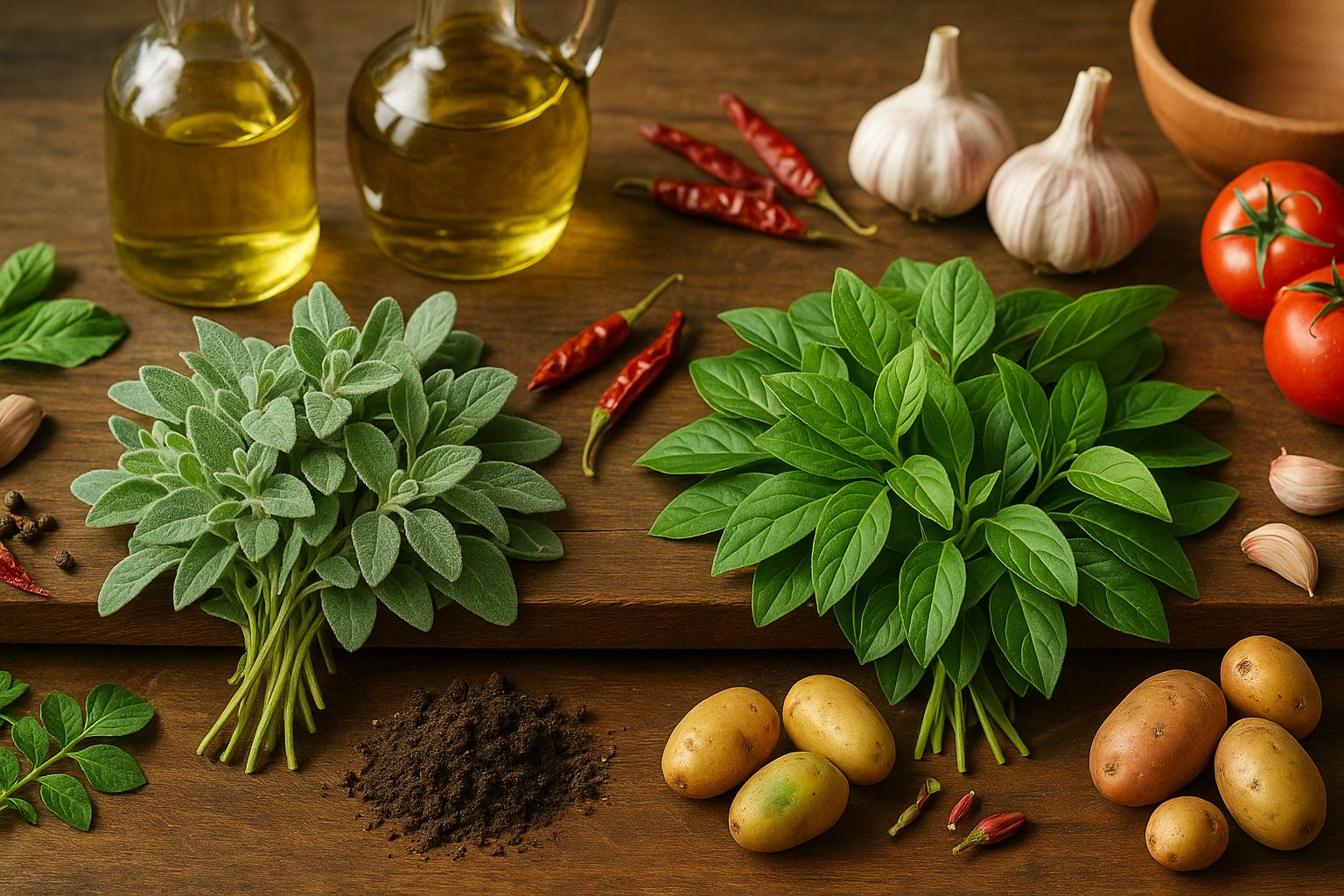Introduction to Oregano Varieties
When it comes to enhancing flavors in both classic and modern dishes, seasoned cooks often debate the differences between Mexican oregano and the oregano commonly found in Mediterranean cuisine. Oregano holds a prized spot in kitchens around the world, lending its robust, aromatic punch to everything from Italian pizza to Mexican moles. However, many are surprised to learn that the oregano you reach for isn’t always the same plant—“oregano” can refer to distinct species, each offering its own flavor profile and culinary potential. In fact, the oregano that seasons your favorite Greek salad (also known as Mediterranean, Greek, or Italian oregano) is botanically different from the oregano that brings depth to traditional Mexican salsas.
This blog post will help you cut through the spice aisle confusion by exploring the clear distinctions between Mediterranean and Mexican oregano. We’ll guide you through their unique flavors, preferred culinary applications, and provide simple yet effective cooking tips, ensuring that you always pick the right oregano for your dish. Whether you’re a beginner cook upgrading your pantry or a seasoned chef looking to fine-tune recipes, understanding these differences will help you unlock the full potential of this beloved herb in your kitchen.
What Is Greek (Mediterranean) Oregano?

Greek oregano, known botanically as Origanum vulgare, is a perennial herb native to the Mediterranean region. It thrives in sunny, well-drained soil, often flourishing on the rocky hillsides of Greece, Italy, and Turkey. Unlike its milder cousin, sweet marjoram, Greek oregano is robust and resilient, making it a favorite among gardeners looking for an easy-to-grow, drought-tolerant herb.
In Mediterranean cuisine, it’s practically a staple—think freshly picked leaves scattered over pizza, blended into tomato sauces, or mixed with olive oil and lemon juice for zesty Greek salads. Its earthy, slightly bitter, and peppery flavor, complemented by herbal undertones, brings warmth and complexity to countless dishes.
For the best taste, try crushing dried oregano in your palm before sprinkling it on roasted vegetables, grilled fish, or even homemade bread. This aromatic herb doesn’t just add flavor; it embodies the essence of Mediterranean cooking—bold, simple, and full of character.
What Is Mexican Oregano?

Mexican oregano, known botanically as Lippia graveolens, is a fragrant herb native to Mexico and parts of Central America. Unlike Mediterranean oregano, which is related to mint, Mexican oregano belongs to the verbena family, giving it a unique profile that stands out in both scent and taste.
The flavor is bold and complex—expect a citrusy brightness with hints of lemon, along with subtle undertones of anise or licorice. This lively combination pairs beautifully with the rich, earthy, and spicy flavors prominent in Mexican, Tex-Mex, and Latin American dishes.
You’ll often find Mexican oregano featured in classics like pozole, enchilada sauces, taco fillings, and bean soups, adding depth and a refreshing zing that ordinary oregano can’t match.
A good tip: since Mexican oregano has a stronger, more aromatic profile, it’s best to crush the dried leaves between your fingers before adding them to your recipes to help release their essential oils.
Whether you’re making a batch of chili or a slow-cooked birria, having Mexican oregano on hand can elevate your home-cooked Latin meals, bringing authentic regional flair straight to your dinner table.
Key Differences: Flavor, Aroma, and Appearance
Mediterranean and Mexican oregano may share a name, but their flavor, aroma, and appearance set them worlds apart in the kitchen. Mediterranean oregano, commonly used in Italian and Greek cooking, offers a savory, slightly bitter flavor profile with minty undertones and a subtle earthiness. It pairs perfectly with tomato-based sauces, grilled meats, and Mediterranean salads. Its aroma is herbaceous and mildly sweet, evoking classic pizzeria scents. Visually, Mediterranean oregano displays small, roundish leaves with a gray-green hue and a delicate, almost fuzzy texture.
In contrast, Mexican oregano, a staple in Latin American cuisine, boasts a bolder, more citrusy taste with hints of licorice and a slight peppery kick. Its scent is pungently floral with bright lemon notes, intensifying flavors in salsas, chili, and slow-cooked meats. The leaves are generally larger, more elongated, and have a brighter green color with a coarser, slightly brittle feel.
Because of these marked differences, substituting one for the other can dramatically change a dish’s outcome. For example, using Mediterranean oregano in a traditional Mexican pozole might mute the vibrant, zesty character, while Mexican oregano can overpower the gentle sophistication of a classic Italian marinara.
In short, each variety brings its signature personality to recipes; recognizing their unique qualities ensures dishes taste as intended and helps home cooks experiment with authenticity while avoiding unexpected flavor twists.
Best Uses in Cooking
Mediterranean oregano shines in classic Italian and Greek dishes, lending its robust, slightly peppery flavor to tomato sauces, pizza, roasted vegetables, and grilled meats. It’s the perfect match for hearty pasta ragù, Greek salad, or a lemony chicken souvlaki marinade. Mediterranean oregano pairs beautifully with basil, thyme, rosemary, and marjoram—try sprinkling a bit into homemade focaccia or alongside basil in Caprese salad for extra depth.
In contrast, Mexican oregano has brighter, citrusy, almost anise-like notes that make it an essential ingredient for Latin American dishes like chili con carne, tacos al pastor, pozole, or enchilada sauce. Mexican oregano pairs well with cumin, coriander, chili powder, and dried chiles, elevating spicy or earthy recipes.
When choosing between fresh and dried oregano, keep in mind that dried is often more potent and easier to find; fresh oregano offers a milder flavor and is best added near the end of cooking or as a garnish to maintain its delicate aroma. Use dried oregano early in the cooking process—add it when sautéing garlic or onions, or stir it into simmering sauces so its earthy flavor can fully infuse your dish.
For both types, crushing dried oregano between your fingers releases more oils and intensifies the flavor, ensuring your dishes truly stand out.
Can They Be Used Interchangeably?
While many ingredients may seem similar, not all can be swapped without changing the final dish. For example, swapping fresh herbs for dried is common, but you should use less dried since the flavor is more concentrated—generally, use one-third the amount of dried herb as you would fresh.
For spices, substituting cinnamon for nutmeg or vice versa can work in some desserts, but be prepared for a noticeably different flavor; cinnamon is warmer and sweeter, while nutmeg is more earthy and pungent.
In baking, butter and margarine might look alike, but margarine often contains more water, which can affect texture—use only if the recipe allows for moisture variation.
When substituting lemon juice for vinegar in salad dressings, expect a brighter, more citrus-forward taste; you may want to adjust other seasonings to balance the acidity.
On the other hand, replacing wine with broth in a slow-cooked stew works for those avoiding alcohol, but you’ll lose some depth—consider adding a splash of balsamic vinegar for complexity.
Here’s a quick cheat sheet for common swaps:
- Fresh to dried herbs: use 1/3 the amount
- Butter/margarine: only if recipe allows for water content
- Wine/broth: add vinegar for flavor depth
- Lemon juice/vinegar: adjust additional acids and seasonings
Always taste as you go and start small when substituting—some changes can significantly alter the outcome of your dish.
Quick Recipe Inspiration Featuring Each Oregano
Mediterranean oregano shines in classic dishes like Greek salad—just toss together ripe tomatoes, cucumber, red onion, Kalamata olives, and feta cheese, then drizzle with olive oil and a generous sprinkle of dried oregano for a fresh, herbal kick.
Or, try making your own Italian seasoning by mixing dried Mediterranean oregano with basil, thyme, rosemary, and garlic powder; use it on pizzas, bruschetta, or roasted vegetables for an instant flavor boost.
For a totally different twist, Mexican oregano adds an earthy, citrusy punch perfect for hearty recipes. Use it to season carne asada: simply coat steak with a blend of Mexican oregano, cumin, chili powder, garlic, salt, and pepper before grilling. Or stir a teaspoon into a pot of hominy-rich pozole for vibrant depth.
If you’re new to using oregano, start with just half a teaspoon, taste, and adjust—it’s easy to add more, but hard to take out! Try the different varieties side by side in simple salsas or tomato sauces to discover which flavors you love best.
The key is to experiment and have fun; oregano can transform everyday meals into something special, no matter your cooking experience.
Conclusion and Quick Reference Guide
Oregano comes in two main types: Mediterranean, with its mild and subtly sweet flavor, and Mexican, which is bolder and peppery. Mediterranean oregano is perfect for Italian and Greek dishes like pizza, pasta, or salads, while Mexican oregano adds depth to chili, tacos, and salsas. Each type brings its own character, so experimenting in your kitchen can really elevate your meals. Don’t hesitate to try both and discover which best complements your favorite recipes!
Quick reference:
- Mediterranean: sweet, mild, best for Italian/Greek food
- Mexican: earthy, spicy, great for Mexican/Southwest dishes
- Use dried or fresh, but adjust amounts since flavors concentrate when dried
